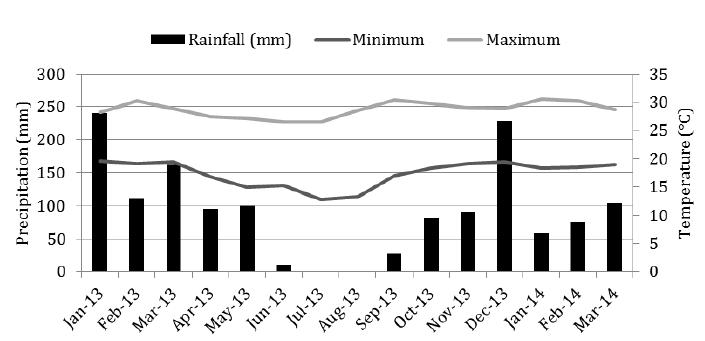ABSTRACT
The objective of this study was to evaluate the effects of Brachiaria brizantha cv. Marandu syn. Urochloa brizantha cv. Marandu (Marandu palisadegrass) in late winter on pasture structure, apparent selectivity, and sheep production during spring and early summer. The conditions of deferred pastures at the end of winter were: low (15.1cm and 4600kg/ha of DM), medium (23.2cm and 5940kg/ha of DM), high (31.4cm and 7640kg/ha of DM) and high/mowed (31.3cm and 7200kg/ha of DM, mowed to 8cm). The experiment was conducted in split plot design (sward conditions at the end of winter: low, medium, tall and tall/lowered) during time (early, middle and late spring/summer) and completely randomized design with three replications. The percentages of live leaf laminae in available forage and in simulated grazing samples were higher in tall/lowered sward and lower in high sward, oppositely to percentage of dead tissue. Only at the beginning of the grazing period the high/lowered sward had lower forage mass and bulk density. This remained high in high sward during all the grazing period. The sheep performance and the animal production per area were higher in low sward and lower in tall swards. The low sward has better structure and higher sheep production starting at spring. The lower of the marandu palisade grass at late winter improves this structure and increases sheep production during spring and early summer.
Keywords:
Animal selectivity; Brachiaria brizantha syn; Urochloa brizantha; mowing; sward structure


